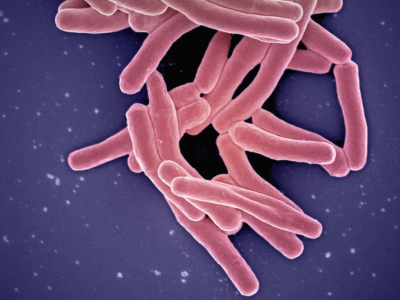Experts warn that drug-resistant "nightmare bacteria" could threaten millions of Americans
- Replies 0
Imagine a microscopic invader that can slip past the best defenses and outsmart the most powerful medicines.
It sounds like a plot from a medical thriller, but for millions of Americans, it is a real threat, as these nearly untreatable bacteria spread silently through hospitals and care facilities.
Government researchers say cases with one dangerous strain are multiplying more than five times in just a few years.
Doctors now warn that this rise threatens to erase decades of progress in fighting drug-resistant infections.
That’s a mouthful, but it boils down to this: these are common bacteria (like E. coli and Klebsiella) that have learned to resist carbapenems, a class of antibiotics usually reserved as a last line of defense.
When these bacteria pick up a gene called NDM (New Delhi metallo-beta-lactamase), they become nearly untreatable.
The NDM gene acts like a suit of armor, making the bacteria impervious to almost all antibiotics.
Why is this so alarming? These bacteria can cause everything from pneumonia and urinary tract infections to deadly bloodstream infections.
And when standard treatments fail, doctors are left with few—if any—options.

According to a recent government study, cases of these “nightmare bacteria” have surged by 18% in just five years.
Infections from the most dangerous strain—NDM-CRE—have skyrocketed by a jaw-dropping 461%. In 2020 alone, there were about 12,700 CRE infections and 1,100 deaths in the US.
And experts warn that these figures are likely an undercount, since not all states report data, and many hospitals lack the specialized tests needed to detect these superbugs.
To put it in perspective: more than 2.8 million Americans get an antimicrobial-resistant infection each year, and over 35,000 die as a result.
The rise of NDM-CRE is threatening to undo decades of progress in the fight against antibiotic-resistant germs.
You may be asking yourself, "How did these bacteria become so tough?” The answer is a mix of science and human behavior.
Overuse and misuse of antibiotics—in both medicine and agriculture—have created evolutionary pressure, allowing only the strongest, most resistant bacteria to survive and multiply.
The NDM gene can even jump between different types of bacteria, spreading resistance like wildfire.
Hospitals and nursing homes are especially vulnerable. The bacteria can hitch a ride on the hands of healthcare workers, contaminated surfaces, or medical equipment.
Patients with weakened immune systems or those undergoing invasive procedures are at the highest risk.
One of the biggest challenges is detection. Many hospitals don’t have the specialized tests needed to quickly identify NDM-CRE.
This means precious time is lost before the right treatment can begin—and in the meantime, the bacteria can spread to other patients.
Even when the infection is identified, treatment is complicated. Most new antibiotics target only specific types of resistance, so doctors need to know exactly which gene is causing the problem. But with limited testing, they’re often left guessing.
Also read: Common painkillers could be making antibiotics less effective, scientists warn
Also read: Common medications may be fueling a rise in deadly senior falls
Read next:

Have you or someone you know been affected by a drug-resistant infection? Do you have questions about how to stay safe in hospitals or nursing homes? Or maybe you have tips for advocating for yourself or a loved one in a healthcare setting?
It sounds like a plot from a medical thriller, but for millions of Americans, it is a real threat, as these nearly untreatable bacteria spread silently through hospitals and care facilities.
Government researchers say cases with one dangerous strain are multiplying more than five times in just a few years.
Doctors now warn that this rise threatens to erase decades of progress in fighting drug-resistant infections.
What are “nightmare bacteria” and why are they so dangerous?
First, a little background. CRE stands for Carbapenem-resistant Enterobacterales.That’s a mouthful, but it boils down to this: these are common bacteria (like E. coli and Klebsiella) that have learned to resist carbapenems, a class of antibiotics usually reserved as a last line of defense.
When these bacteria pick up a gene called NDM (New Delhi metallo-beta-lactamase), they become nearly untreatable.
The NDM gene acts like a suit of armor, making the bacteria impervious to almost all antibiotics.
Why is this so alarming? These bacteria can cause everything from pneumonia and urinary tract infections to deadly bloodstream infections.
And when standard treatments fail, doctors are left with few—if any—options.

The bacteria are causing sobering numbers. Image source: National Institute of Allergy and Infectious Diseases / Unsplash
According to a recent government study, cases of these “nightmare bacteria” have surged by 18% in just five years.
Infections from the most dangerous strain—NDM-CRE—have skyrocketed by a jaw-dropping 461%. In 2020 alone, there were about 12,700 CRE infections and 1,100 deaths in the US.
And experts warn that these figures are likely an undercount, since not all states report data, and many hospitals lack the specialized tests needed to detect these superbugs.
To put it in perspective: more than 2.8 million Americans get an antimicrobial-resistant infection each year, and over 35,000 die as a result.
The rise of NDM-CRE is threatening to undo decades of progress in the fight against antibiotic-resistant germs.
You may be asking yourself, "How did these bacteria become so tough?” The answer is a mix of science and human behavior.
Overuse and misuse of antibiotics—in both medicine and agriculture—have created evolutionary pressure, allowing only the strongest, most resistant bacteria to survive and multiply.
The NDM gene can even jump between different types of bacteria, spreading resistance like wildfire.
Hospitals and nursing homes are especially vulnerable. The bacteria can hitch a ride on the hands of healthcare workers, contaminated surfaces, or medical equipment.
Patients with weakened immune systems or those undergoing invasive procedures are at the highest risk.
What are the symptoms?
- Pneumonia: Cough, fever, shortness of breath.
- Urinary Tract Infection: Painful, frequent urination, sometimes with fever.
- Bloodstream Infection (Sepsis): High fever, chills, confusion, dangerously low blood pressure—this is a medical emergency.
One of the biggest challenges is detection. Many hospitals don’t have the specialized tests needed to quickly identify NDM-CRE.
This means precious time is lost before the right treatment can begin—and in the meantime, the bacteria can spread to other patients.
Even when the infection is identified, treatment is complicated. Most new antibiotics target only specific types of resistance, so doctors need to know exactly which gene is causing the problem. But with limited testing, they’re often left guessing.
Also read: Common painkillers could be making antibiotics less effective, scientists warn
Who’s most at risk?
While anyone can be affected, certain groups are especially vulnerable:- Older adults, especially those in hospitals or long-term care facilities
- People with weakened immune systems
- Patients with chronic illnesses or those who have had recent surgeries
- Individuals with medical devices like catheters or ventilators
Also read: Common medications may be fueling a rise in deadly senior falls
What can you do to protect yourself?
While the rise of “nightmare bacteria” is concerning, there are steps you can take to reduce your risk:- Practice Good Hygiene: Wash your hands thoroughly and often, especially after visiting hospitals or care facilities.
- Ask Questions: If you or a loved one is hospitalized, don’t hesitate to ask about infection control measures. Are staff washing their hands? Are surfaces and equipment being cleaned regularly?
- Be Smart About Antibiotics: Only take antibiotics when prescribed, and always finish the full course—even if you feel better. Never pressure your doctor for antibiotics if they say you don’t need them.
- Stay Informed: If you have a chronic illness or are scheduled for surgery, talk to your healthcare provider about your risk for resistant infections and what precautions are in place.
- Advocate for Testing: If you develop an infection in a healthcare setting, ask if specialized testing for resistant bacteria is available.
Read next:
- Cases of dangerous coastal bacteria are climbing—how to protect yourself
- Is this deadly disease heading your way? Shocking new spread reported just miles from Maine
Key Takeaways
- A highly dangerous “nightmare bacteria” known as NDM-producing CRE, which is resistant to most antibiotics, is rapidly spreading in the US, with infections rising by 18% overall and the most dangerous strain surging by 461% since 2019.
- The bacteria, which can cause deadly infections like pneumonia, UTIs, and sepsis, are especially threatening in healthcare settings where vulnerable patients and a lack of rapid diagnostic tests allow them to spread undetected.
- The rise in cases is likely due to a combination of increased bacterial resistance from antibiotic overuse and more patients with weakened immune systems, making effective treatment and infection control more difficult.
- Doctors face major challenges as newer antibiotics may only target certain types of resistance, but limited testing in clinical labs means treatment for these infections is increasingly complicated and sometimes delayed.






